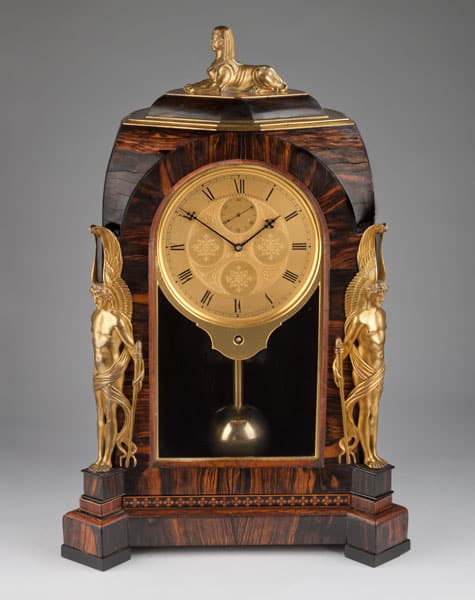In this occasional series, we will explore the life and achievements of the greatest and most respected horologists of their time. This feature will focus on Thomas Cole who became one of the greatest clockmakers of the Victorian era.
In the intricate world of horology, where art meets engineering and time is both subject and medium, few names shine with the quiet brilliance of Thomas Cole. Active during the height of the Victorian era—a period known for its innovation, opulence, and mechanical curiosity—Cole was not merely a clockmaker; he was an artisan whose timepieces fused form and function with poetic finesse. While not as widely known as some of his contemporaries, Thomas Cole’s work remains a touchstone of 19th-century English decorative art, celebrated for its elegance, ingenuity, and uncompromising craftsmanship.
Early Life and Career
Thomas Cole was born in Somerset, England, in 1800 into a family already steeped in the tradition of clockmaking. His elder brother was James Ferguson Cole, who was also a renowned watch and clockmaker in his own right. The brothers were in partnership between until 1829, and later worked independently. James Ferguson was often described as the English Breguet.
Thomas moved to London in the 1830s and soon began to establish himself in the city’s competitive and vibrant horological scene. By the early 1840s, Cole was already exhibiting a unique flair for design and precision, but it was during the 1850s and 60s that his work truly flourished.
Unlike many clockmakers of his day, Cole did not produce mass-market items. He operated outside the framework of industrial manufacturing, preferring to work in the high-end, artisanal niche of bespoke timepieces. He developed a distinctive style—marked by decorative cases in gilt-bronze, silver, or gilt metal and often adorned with enamel, porcelain, and intricate engraving—that appealed to an affluent Victorian clientele eager for objects that were both useful and beautiful.
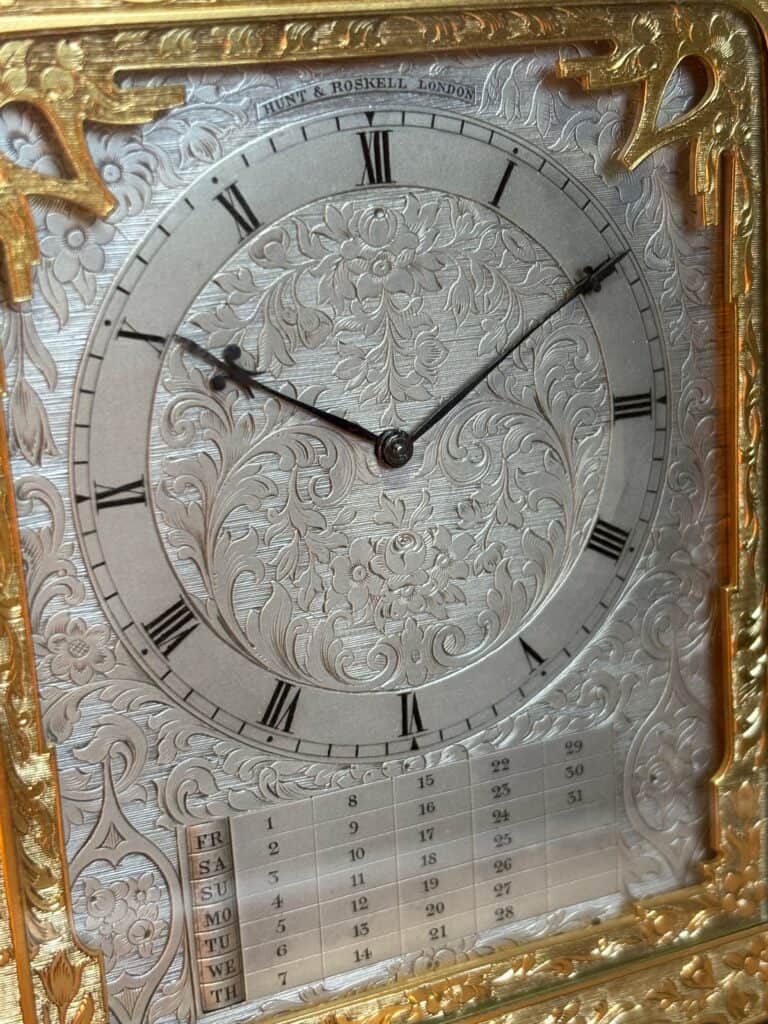
Design Innovation and Horological Signature
Thomas Cole’s hallmark was the combination of precise timekeeping with ornamental elegance. He is best known for his carriage-type, unusual, e.g. tripod clocks (below) and strut clocks—small, often portable timepieces designed to rest on a table, desk, or mantel. These were not utilitarian devices so much as status symbols, miniaturised monuments to the owner’s taste and wealth.
Cole was also admired for his engraving techniques and the exquisite attention he paid to surfaces. His dials, often made of silver or enamel, were typically minimalistic, a deliberate contrast to the ornateness of the cases. The restrained, classical Roman numerals and delicate ‘fleur-de-lis’ hands (see above) show an aesthetic balance that is as pleasing now as it was then.
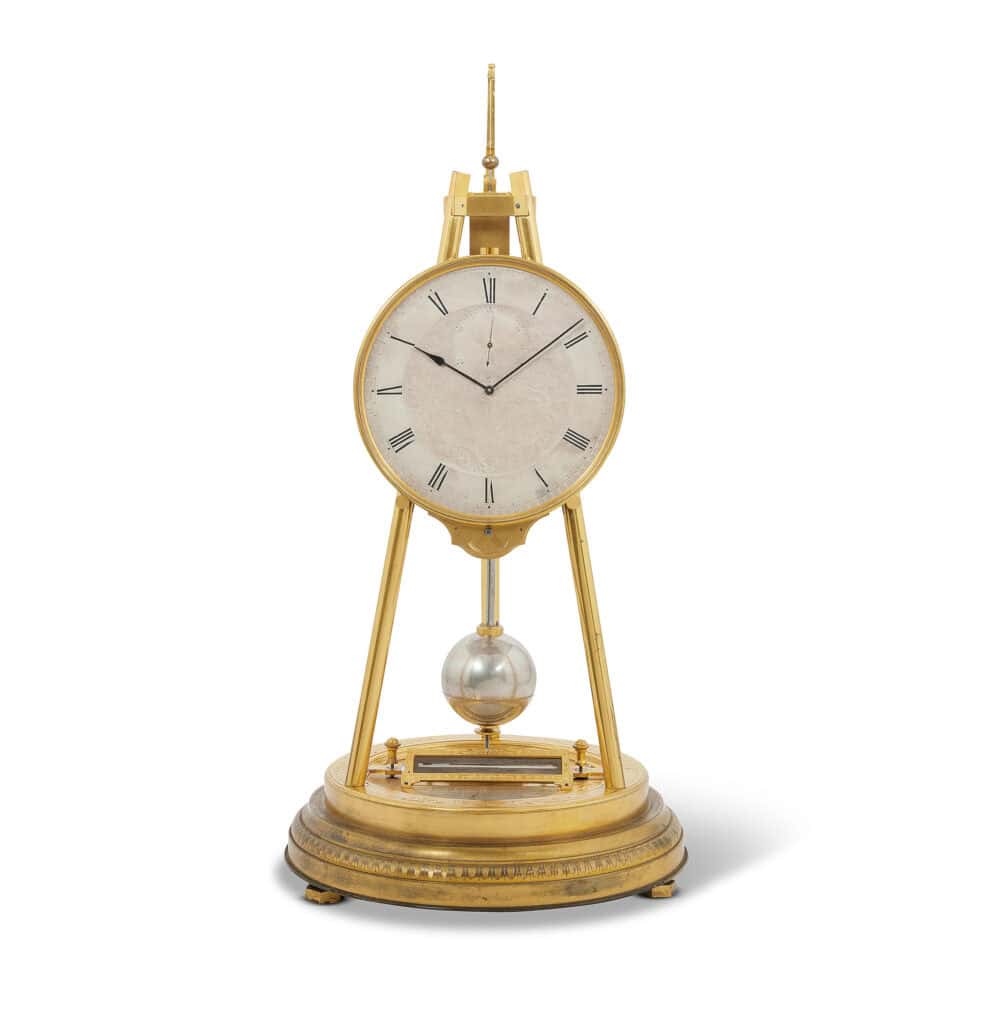
Clientele and Exhibitions
Cole’s reputation grew steadily through the 1850s and 60s, bolstered by high-profile clients and participation in major exhibitions. He showed work at the Great Exhibition of 1851 in London, where British design and manufacturing were on dazzling display. His clocks were also featured at the 1855 Paris Exposition Universelle, earning him critical praise for both mechanical and artistic excellence.
By the 1860s, Cole was widely regarded as one of England’s pre-eminent decorative clockmakers. His clients included members of the British aristocracy and wealthy industrialists. The royal warrant he held—“Maker to the Queen”—placed him in a league with the most elite craftsmen of his generation.
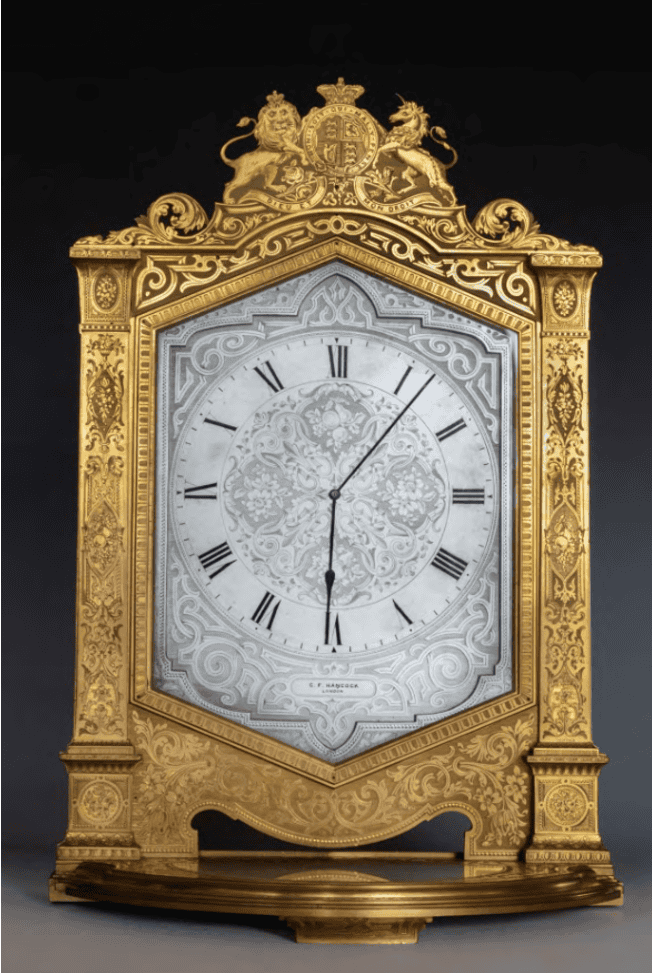
Decline and Death
Tragically, Thomas Cole’s career was cut short when he died in 1864. Though still at the peak of his creative powers, he left behind a legacy of unparalleled craftsmanship. He had no known apprentices or direct successors, which contributed to the relative obscurity of his name in later horological histories, despite the consistent excellence of his output.
Legacy and Market
Today, Thomas Cole’s clocks are prized by collectors and museums alike. Institutions such as the British Museum and Victoria and Albert Museum house and have housed examples of his work, where they are appreciated not just as functional devices but as works of art.
Auction houses regularly feature Cole’s timepieces, where they command premium prices, especially those in pristine condition with original cases. Experts often cite the combination of artistry and mechanical precision in his clocks as among the finest of the 19th century.
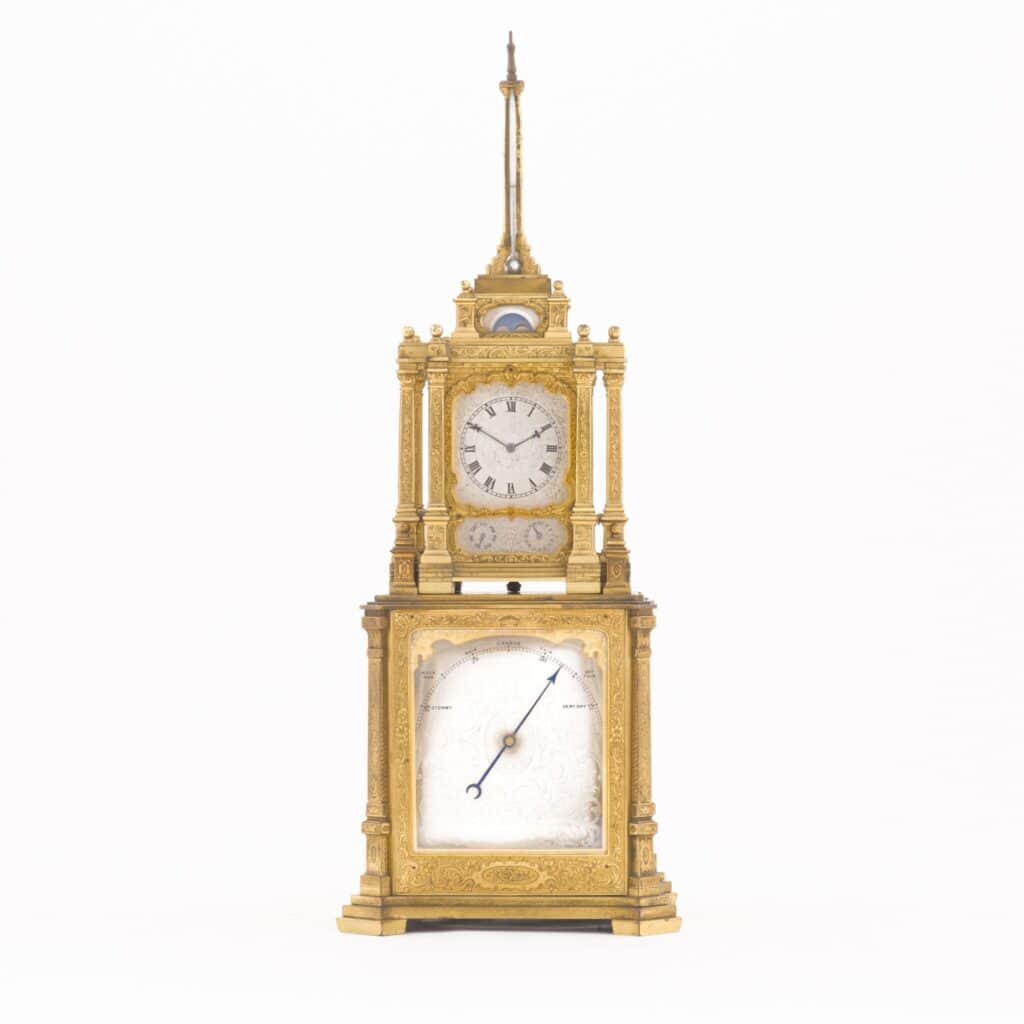
Conclusion
Thomas Cole’s clocks are exceptional artefacts of an age when even the measurement of time was imbued with beauty. In a world hurtling toward industrial standardisation, Cole remained committed to the ideal of the artisan-craftsman, where every dial and casing was conceived with a mind for elegance and executed with hands of rare skills. His works, though small in scale, encompass a vast cultural moment—capturing the essence of Victorian refinement and the timeless allure of masterful design.
For more detailed information please visit J.B. Hawkins
Hero Image: Thomas Cole No. 1056, retailed by Boxell, Brighton. Image courtsey of Ben Wright Clocks

